Infographic: How expensive are everyday items in Nigeria? | Food News
More than ever before, Nigerians are struggling to buy food commodities as the country struggles through a record hike in inflation, signalling what experts warn is a “food crisis”.
Staple prices have risen for a third consecutive year, the results of Africa’s largest economy bowing under the weight of a barrage of factors that are driving more of its estimated 200 million people into poverty.
Prices of staples over time
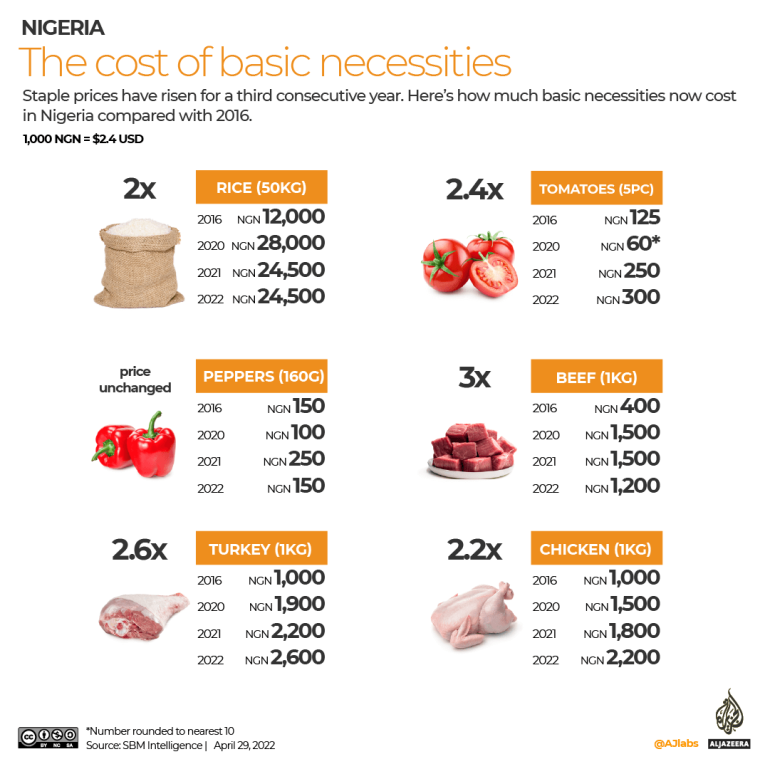
Nigeria, a major crude producer, is heavily reliant on oil imports, leaving its economy extremely vulnerable to volatile oil prices.
As one economist put it, when the oil market sneezes, Nigeria catches a cold. But worsening insecurity and climate change effect, as well as COVID-19 aftershocks, have severely dented the economy even more, plunging the naira to frightening new lows against the dollar in recent months.
Consequently, nearly half of the population remains in poverty. Millions face food insecurity already, with more expected to join this year, according to the UN’s food agency.
As it stands, Nigeria is home to the largest population of poor people worldwide. As many as four out of 10 people live on less than a dollar a day – below the poverty line.

Meal costs have risen sharply. The cost of making a pot of jollof, for example – a rice dish that is beloved across Nigeria’s numerous tribes – has doubled in the last six years.
A pot for a family of five – the national average – has gone from costing about N4000 (naira), or $9.6, in 2016 to more than N8,500 ($20.5) in March this year, representing a little more than a 100 per cent increase.
In some parts of the country, those prices went as high as N10,000 ($24.1), according to Nigerian sociopolitical firm SBM Intelligence.
Food costs at the end of March were even higher than in 2020 when COVID shutdown shocks hit Nigeria and caused a frenzied hike. The latest prices reflect the highest increases on record.
Soaring food prices
The price of rice, a staple eaten by Nigerian families almost daily, has increased several times in the past years. In 2016, before low oil prices forced Nigeria into a recession, a 50 kg bag of rice cost about N14,000-15,000.
Today, those prices have almost doubled, reaching N25,000-28,000.
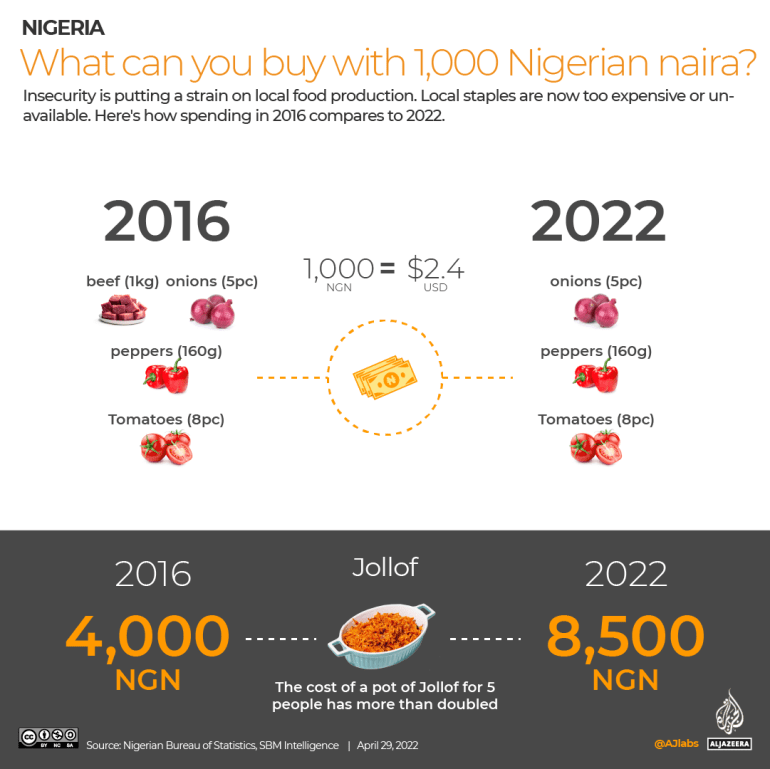
Tomatoes have also been affected, as well as meat and poultry products. Many buyers are cutting back on consumption, traders say. While some are opting to have tinier pieces of meat on their meals – akin to going from a bun-sized chunk to sugar cube cuts – others are swapping meat for eggs, a cheaper source of protein.
Other staples
Other staples like garri – a cassava byproduct produced locally – have seen dramatic price swings too, with a small bowl now costing N1000 ($2.4), up from N350 ($.84) in 2016.
Bean costs shot up by more than 100 percent in the past year alone, an unprecedented rise. A 50kg bag costing N41,500 ($100.2) in 2020 sold for N100,000 ($241.5) in 2021.
Bread has been a tad steadier, with a loaf moving from N300 ($.72) in 2019 to N400 ($.96) this year, although many complain of noticeable reductions in sizes. Nigeria’s bakers said in April that a price increase is likely because of rising flour costs.
Exchange rates: Official vs Black market
Nigeria’s current woes stem largely from acute foreign exchange shortages because of its overreliance on fuel exports. Crude oil accounts for up to 90 percent of exports.
But oil slumps in 2020 amid the pandemic hammered the country’s foreign reserves and pulled Nigeria into a second recession in four years. The naira is still struggling to recover despite the central bank’s multiple devaluations and heavy restrictions on dollar supply for imports.
Although oil prices have risen since 2020, Nigeria is not benefiting from the new yields. There is less crude oil to export because of infrastructure deficits and huge oil theft in the Niger Delta, its crude heartland.
Crude oil output slipped from 1.42 million barrels per day in 2021 to 1.2 million barrels per day in 2022. Shell and Exxon Mobil have announced exit plans because of a myriad of issues from oil theft to insecurity, in the oil industry.
Then there is the multiple exchange rate regime which makes it difficult to track the real value of the naira. On the official market, the naira is pegged at 414 to the dollar but on the black market where many businesses get their supply from, the peg is at 593.

Source: Official rates;
Rising energy prices
Despite being Africa’s largest oil producer, Nigeria frequently experiences scarcity.
All four of the country’s refineries are barely functional from years of corruption and neglect, forcing Abuja to spend $7bn yearly on importing fuel and keeping prices artificially low, straining national coffers.
President Muhammadu Buhari’s government has attempted to remove the subsidies but failed, fearing a repeat of furious nationwide protests that rocked the country in 2012 after an abrupt removal sent prices up to N141 ($0.38) per litre from N65 ($0.15).
In March, scenes of motorists queuing up at fuel stations became common after a sharp increase in fuel pump prices due to global supply disruptions as the Ukraine war bit down hard.
Amid the crisis, Nigeria imported fuel with high levels of methanol unsafe for use, leading to a prolonged scarcity. At the same time, the national grid collapsed, plunging Nigeria’s already dismal electricity generation to almost nothing.
The country’s poor electricity supply – 4000 megawatts compared with South Africa’s 58,000 megawatts – has been a bane for individuals and businesses who must rely on petrol and diesel-powered generators for electricity.
Fuel stations sold a litre of gasoline between N162 ($0.39) and N200 ($0.48). But many people turned to the less-crowded black markets where prices were as high as N400 ($0.96). In 2019, a litre of petrol sold for about N145 ($.35).
Meanwhile, diesel prices have risen by 129.1% from March 2021.
Long-battered economy
Nigeria’s economy has been seeing a battering since 2016 when it recorded the worst food price inflation in four decades following a global oil price slump to 13-year lows. The country has hardly recovered from that recession, the World Bank says.
Things worsened when the Buhari administration restricted imports of certain items like rice and poultry aiming to drive local production and consumption but inadvertently driving up food prices.
The government shut land borders in 2019 to stem the smuggling of commodities from neighbouring Benin Republic.
Just as many adapted to the higher prices, the coronavirus pandemic hit in March 2020, stunning the economy into a recession again. Nigeria’s inflation levels were among the world’s highest that year.
An uptick in local rice production shows the government’s plan partially worked but there are still wide gaps in satisfying local demand.
Worsening insecurity
Insecurity is presently the biggest driver of high food prices, Ayodeji Ebo, head of Afrinvest Securities, told Al Jazeera.
Rising violence levels across some of Nigeria’s food-producing states in the northwest, northeast and middle belt zones have sent farmers scampering and led to heightened jostling for scarce food.
The perpetrators are factions of the terror group Boko Haram and armed bandits. Many farmers have been wounded or killed in attacks. The insecurity crisis has also affected food transportation as kidnappers prowl Nigeria’s highways.
The combined challenges of low exports, insecurity and infrastructure gaps could push 19.4 million Nigerians into a food crisis by August, the UN’s food agency said. The agency warned in March that 14.5 million Nigerians are already food insecure, many of them internally displaced persons in northeast, northwest and central regions.
Although the International Monetary Fund forecasts a gross domestic product growth of 3.4 percent by 2023 (compared with -1.8 in 2020), experts say food inflation trends are likely to continue without significant security intervention.
“To lower the price of food items, insecurity has to improve,” Ebo says. “If drastic measures are not taken there will be less investment in the country.”
Additional reporting was contributed by Festus Iyorah from Lagos, Nigeria.
—
Data Sources:
- Nigeria Bureau of Statistics (NBS)
- SBM intelligence
- Survey by Al Jazeera journalists in a Lagos market
- Dataphyte

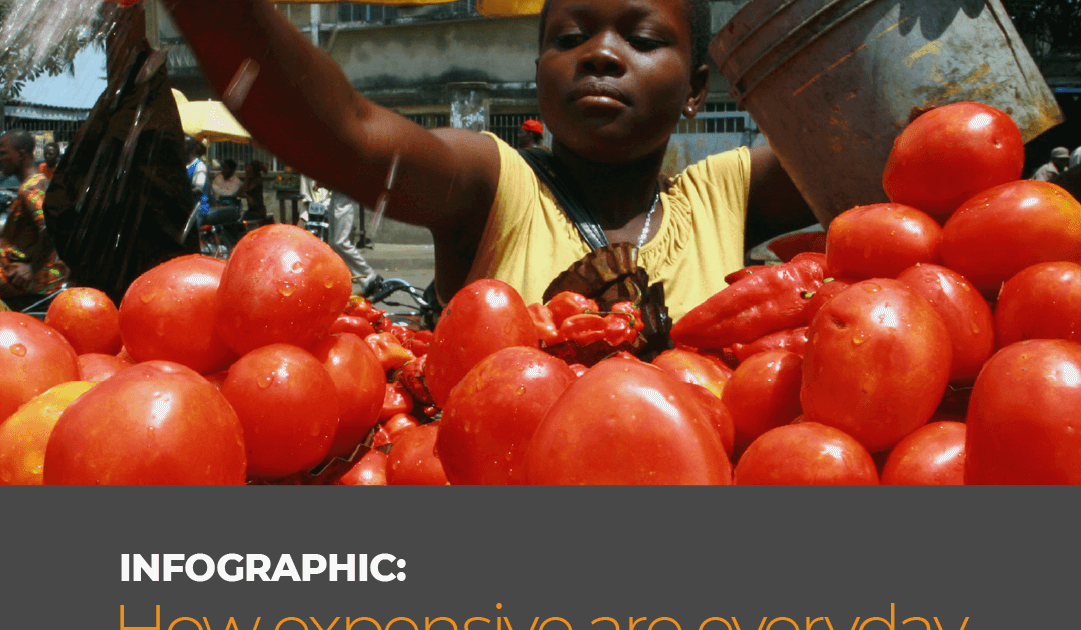

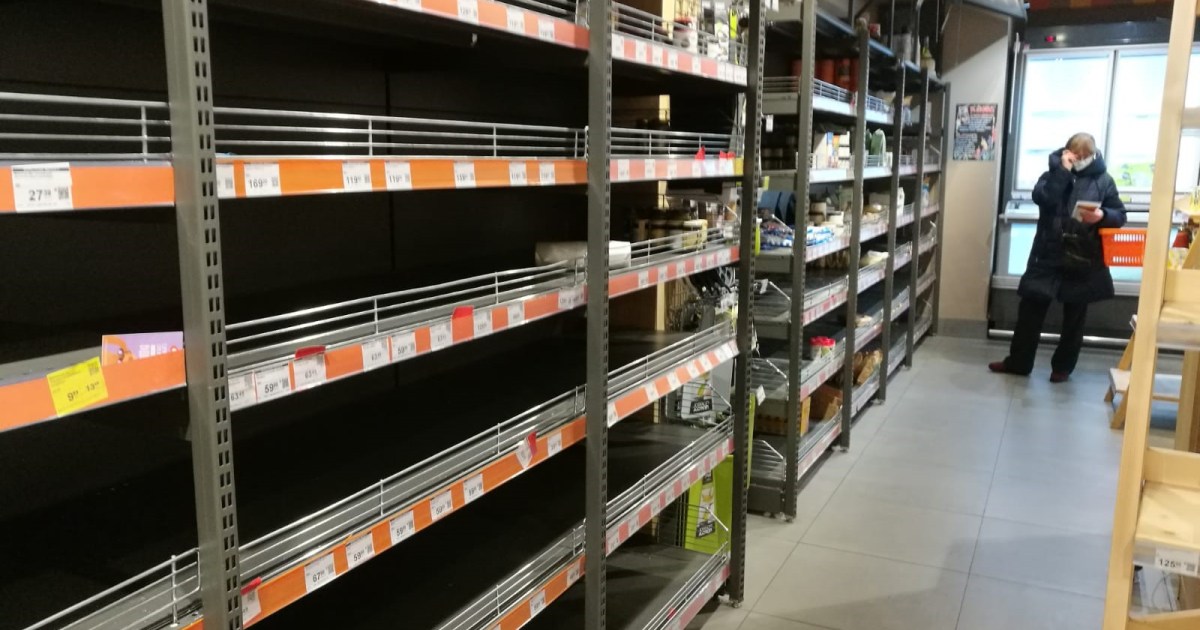
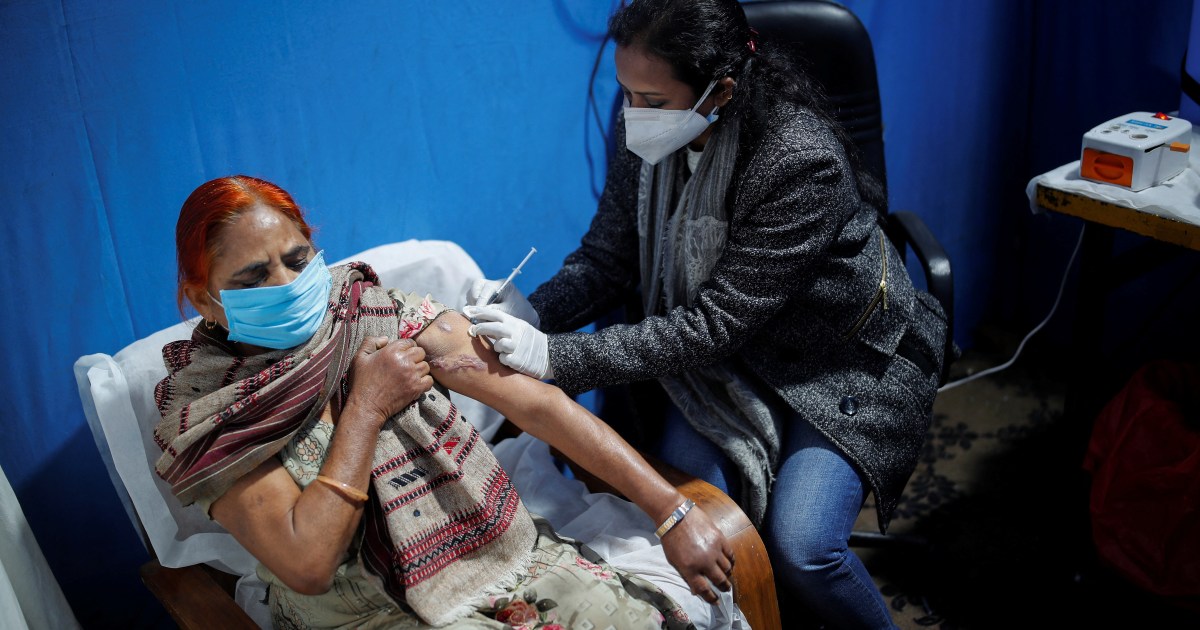
Pingback: briansclub
Pingback: wonderland mushrooms chocolate bars
Pingback: ประกันรถยนต์ชั้น 3
Pingback: 토렌트 사이트
Pingback: https://www.kentreporter.com/reviews/phenq-reviews-urgent-side-effects-warning-honest-customer-truth/
Pingback: look here